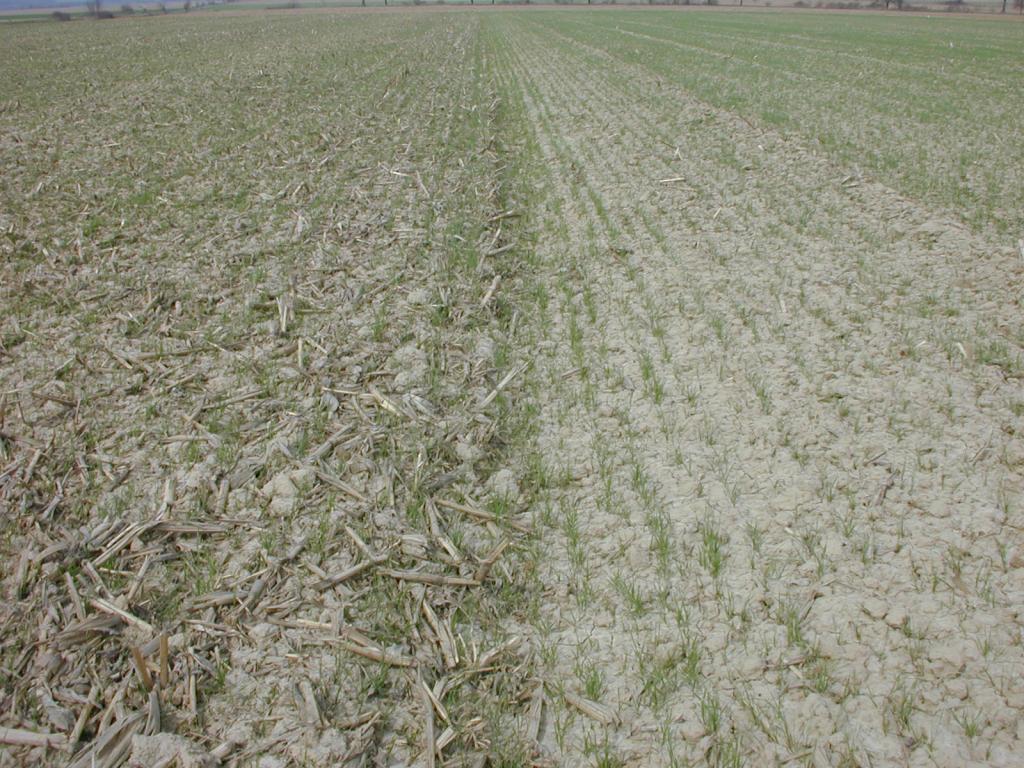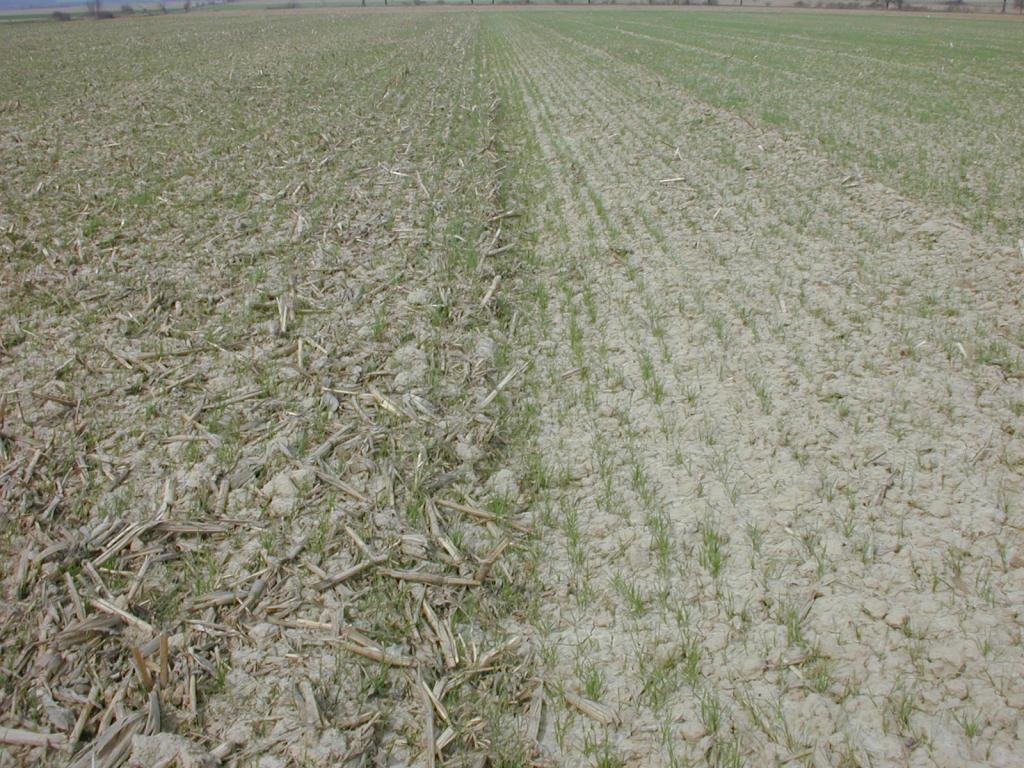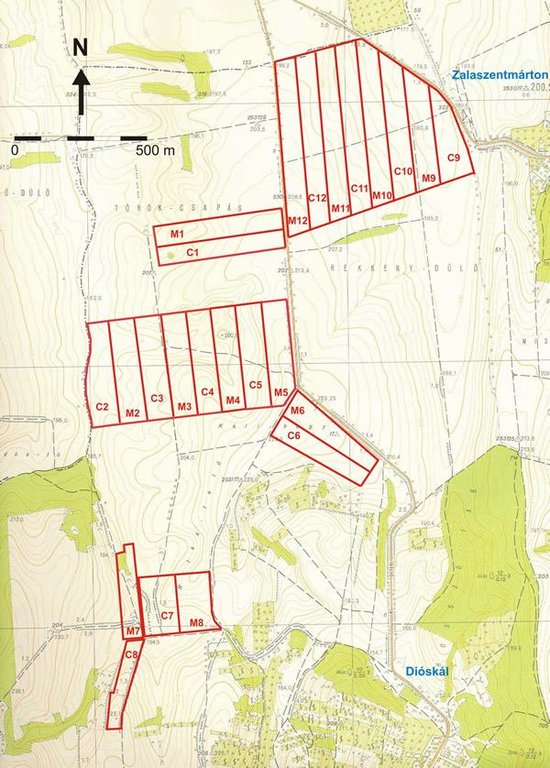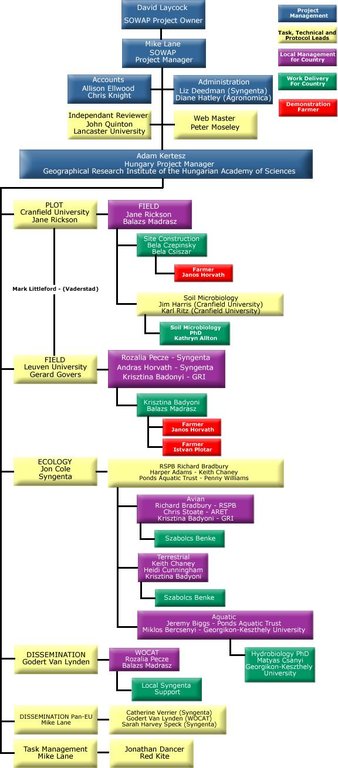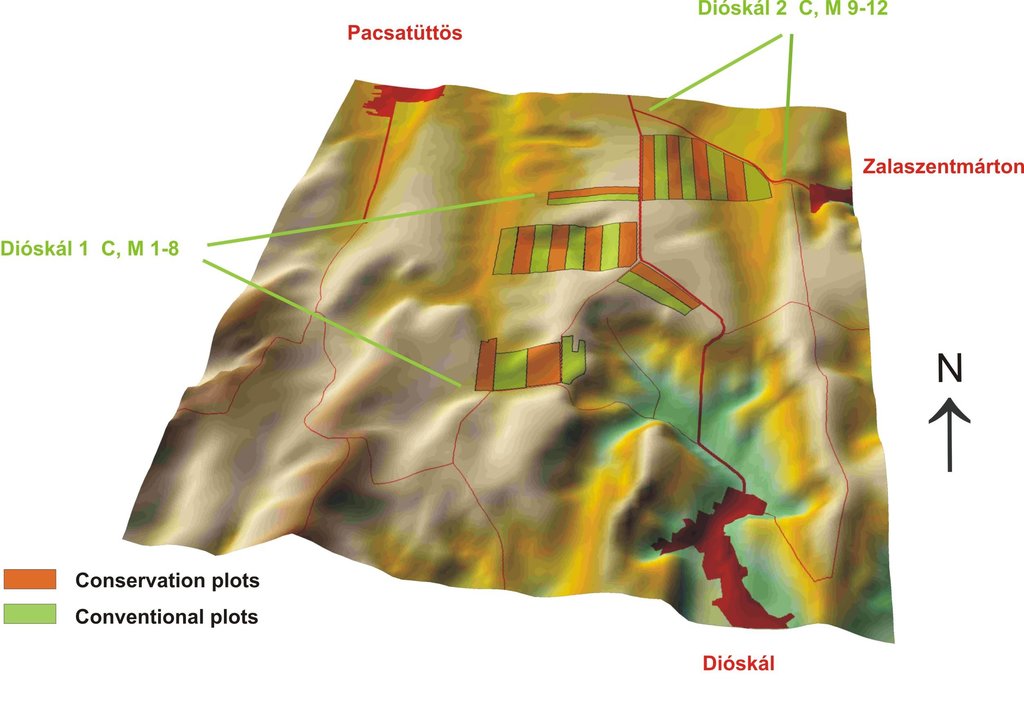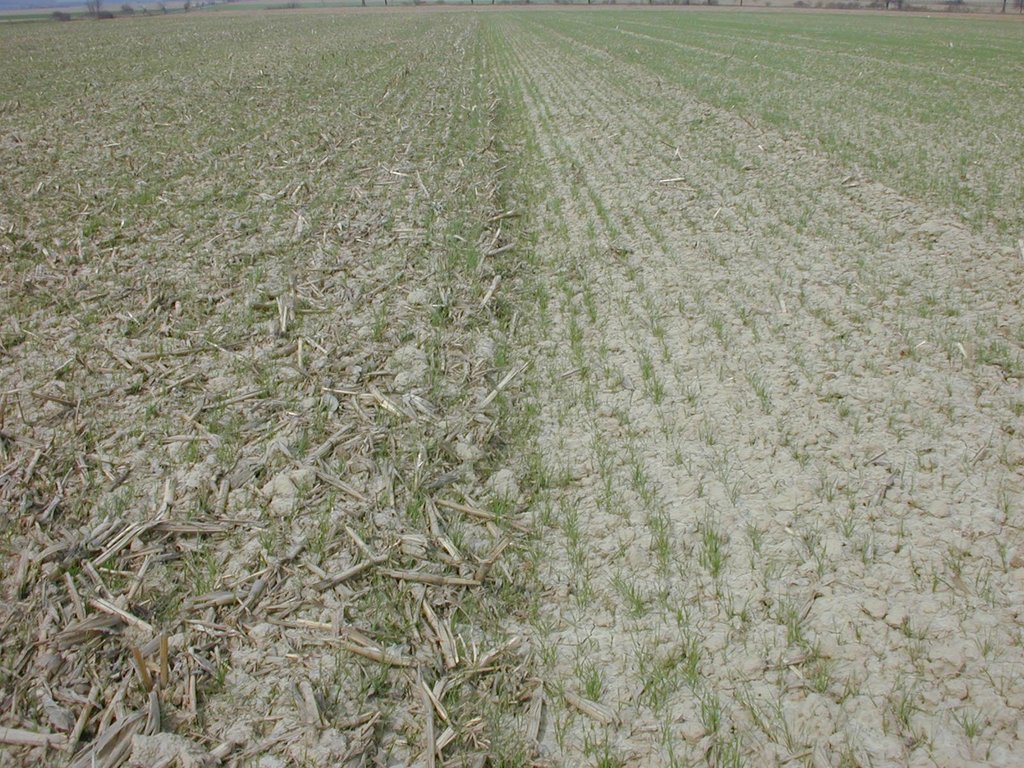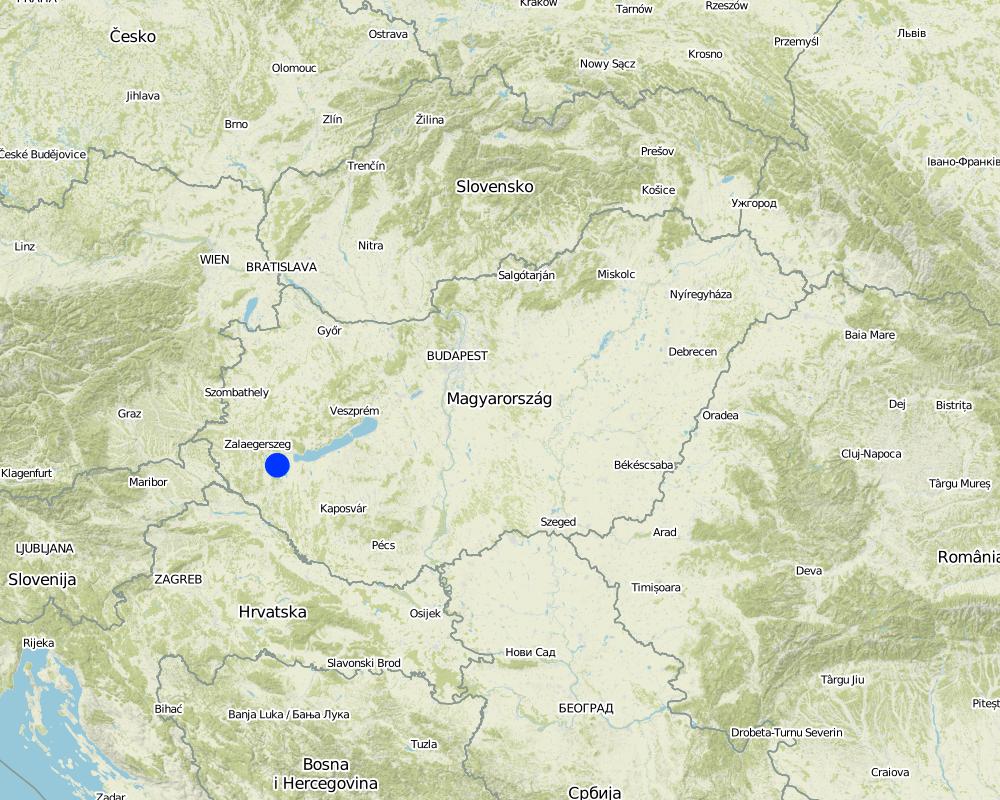Conservation tillage [匈牙利]
- 创建:
- 更新:
- 编制者: Adam Kertesz
- 编辑者: –
- 审查者: Fabian Ottiger
approaches_2552 - 匈牙利
查看章节
全部展开 全部收起1. 一般信息
1.2 参与方法评估和文件编制的资源人员和机构的联系方式
SLM专业人员:
有助于对方法进行记录/评估的机构名称(如相关)
Geographical Research Institute, Hungarian Academy of Sciences (MTA CSFK) - 匈牙利1.3 关于使用通过WOCAT记录的数据的条件
编制者和关键资源人员接受有关使用通过WOCAT记录数据的条件。:
是
1.4 SLM技术问卷的参考

Controlled traffic farming [匈牙利]
All machinery traffic uses the same lane network within the field to reduce the total compacted area, to improve connections, and to optimise overlapping of following runs resulting in more efficient use of labour and inputs. Risks from environmental pollution are also reduced.
- 编制者: Brigitta Szabó
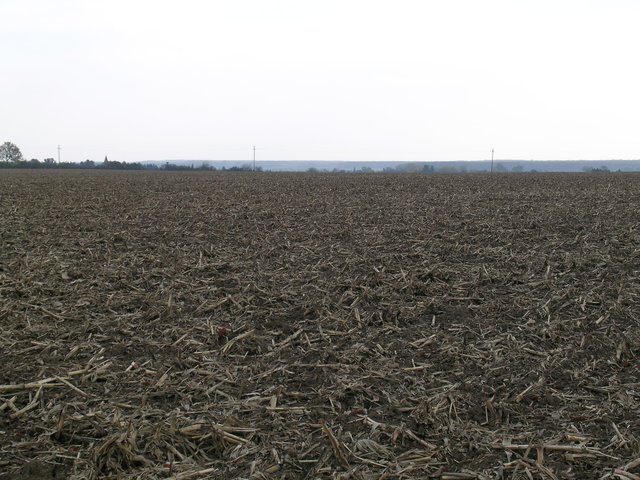
Conservation tillage [匈牙利]
The aim of conservation tillage is to reduce the soil disturbance. It decreases decomposition of organic matter, enhances cycling of nutrients, soil structure and increases water infiltration.
- 编制者: Brigitta Toth
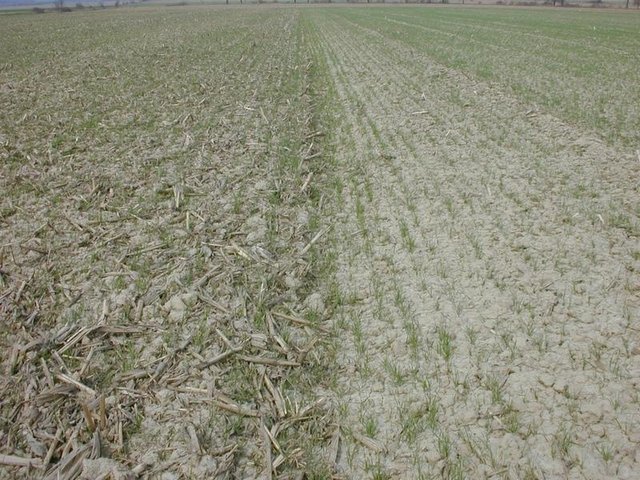
Conservation tillage [匈牙利]
Non inversion, conservation (soil and water protective) tillage.
- 编制者: Ádám Kertész
2. SLM方法的描述
2.1 该方法的简要说明
Non inversion, conservation (soil and water protective) tillage.
2.2 该方法的详细说明
该方法的详细说明:
Aims / objectives: Purpose: Finding and Demonstrating Ways of Better Managing the Land. SOWAP (SOil and WAter Protection) aims to assess the viability of a more 'conservation-oriented' agriculture, where fewer tillage practices replace the numerous cultivations carried out under more 'conventional' arable farming systems. The use of appropriate chemicals is tested, and their potential for off-site contamination assessed, to ensure that any suggested approaches are environmentally sound. Conventional tillage is an environment friendly method, carried out by shallow tillage (with disks and direct drill) and omission of ploughing (non-inversion).
Stages of implementation: Shallow disking, direct drill, environment friendly plant-protecting materials.
2.3 该方法的照片
2.5 采用该方法的国家/地区/地点
国家:
匈牙利
区域/州/省:
Zala county
Map
×2.6 该方法的开始和终止日期
注明开始年份:
2003
2.7 方法的类型
- 基于项目/方案
2.8 该方法的主要目的/目标
The Approach focused mainly on SLM with other activities (ecology, economics, EU and national rules and regulations)
Soil and water protection (soil loss reduction), biodiversity enhancement, Finding and Demonstrating Ways of Better Managing the Land., Finding an environment friendly technology.
The SLM Approach addressed the following problems: deffence against soil compaction
2.9 推动或妨碍实施本办法所适用的技术的条件
财务资源和服务的可用性/可得性
- 阻碍
purchase new machines
Treatment through the SLM Approach: It is easier to get financial support if you apply modern technologies
法律框架(土地使用权、土地和水使用权)
- 启动
The existing land ownership, land use rights / water rights moderately helped the approach implementation
3. 相关利益相关者的参与和角色
3.1 该方法涉及的利益相关者及其职责
- 当地土地使用者/当地社区
Working land users were work equally divided between men and women (1 family (3 persons))
- SLM专家/农业顾问
Reserach Institute
- 国家政府(规划者、决策者)
- 国际组织
- The SOWAP project
3.2 当地土地使用者/当地社区参与该方法的不同阶段
| 当地土地使用者/当地社区的参与 | 指定参与人员并描述活动 | |
|---|---|---|
| 启动/动机 | 被动 | Mainly:rapid/participatory rural appraisal; partly: public meetings; 1 family was choosen (on the basis of suitable land size, machines etc.) |
| 计划 | 互动 | workshops/seminars |
| 实施 | 互动 | responsibility for major steps |
| 监测/评估 | 被动 | interviews/questionnaires; |
| Research | 无 |
3.4 有关SLM技术选择的决策
具体说明谁有权决定选择要实施的技术:
- 主要是SLM专家,咨询土地使用者之后
解释:
Decisions on the method of implementing the SLM Technology were made by mainly by SLM specialists with consultation of land users
4. 技术支持、能力建设和知识管理
4.1 能力建设/培训
是否为土地使用者/其他利益相关者提供培训?:
是
明确受训人员:
- 土地使用者
- SWC specialists, politicians/decision makers
培训形式:
- 在职
- 农民对农民
- 公开会议
涵盖的主题:
methods of conservation tillage, conservation tillage in UK
4.2 咨询服务
土地使用者有权使用咨询服务吗?:
是
说明/注释:
Name of method used for advisory service: Conservation tillage (Soil and Water Protection); 1) Advisory service was carried out through: projects own extension structure and agents; Extension staff: members f the SOWAP project 2) Target groups for extension: land users; Activities: field visit and meetings
Advisory service is quite adequate to ensure the continuation of land conservation activities
4.3 机构强化(组织发展)
是否通过这种方法建立或加强了机构?:
- 否
4.4 监测和评估
监测和评估是该方法的一部分吗?:
是
注释:
bio-physical aspects were regular monitored through measurements
technical aspects were regular monitored through measurements
economic / production aspects were regular monitored through measurements
no. of land users involved aspects were regular monitored through observations
management of Approach aspects were regular monitored through observations
There were few changes in the Approach as a result of monitoring and evaluation: If the soil is very compact the direct drilling is impossible therfore preliminary disking is necessary.
4.5 研究
研究是该方法的一部分吗?
是
提供进一步的细节,并指出是谁做的研究:
Nevertheless this project includes natural and socio-economic aspects.
Research was carried out both on station and on-farm
5. 融资和外部物质支持
5.1 该方法中SLM组成部分的年度预算
注释(例如主要的资助来源/主要捐助者):
Approach costs were met by the following donors: international (EU-Life foundation): 50.0%; international non-government (Syngenta Ltd.): 50.0%
5.2 为土地使用者提供财政/物质支援
土地使用者是否获得实施该技术的财政/物质支持?:
是
5.3 对特定投入的补贴(包括劳动力)
- 设备
| 具体说明哪些投入得到了补贴 | 程度如何 | 对补贴做出具体说明 |
|---|---|---|
| 机械 | 部分融资 | |
| 工具 | 部分融资 | |
- 农业
| 具体说明哪些投入得到了补贴 | 程度如何 | 对补贴做出具体说明 |
|---|---|---|
| 种子 | 部分融资 | |
| 化肥 | 部分融资 | |
| Biocides | 部分融资 | |
如果土地使用者的劳动力是一项重要的投入,那么是不是:
- 以现金支付
5.4 信用
是否根据SLM活动的方法给予信用值?:
否
6. 影响分析和结论性陈述
6.1 方法的影响
该方法是否帮助土地使用者实施和维护SLM技术?:
- 否
- 是,很少
- 是,中等
- 是,支持力度很大
demonstrations, meetings, articles, publications, TV films.
Did other land users / projects adopt the Approach?
- 否
- 是,很少
- 是,中等
- 是,支持力度很大
A couple of land users keep trying this method because it reduces theire costs.
6.3 方法活动的可持续性
土地使用者能否维持通过该方法实施的措施(无外部支持的情况下)?:
- 是
6.4 该方法的长处/优点
| 土地使用者眼中的长处/优势/机会 |
|---|
| future subsidy expectations and better chance for competition |
| soil loss reduction |
| economicalness |
| environmental consciousness agriculture |
| 编制者或其他关键资源人员认为的长处/优势/机会 |
|---|
| soil loss reduction |
| biodiversity enhancement |
| spreading of environmental conscious agriculture |
| soil and water protection |
| economicalness |
6.5 该方法的弱点/缺点以及克服它们的方法
| 土地使用者认为的弱点/缺点/风险 | 如何克服它们? |
|---|---|
| reduced production (yield) | |
| expensive machines |
| 编制者或其他关键资源人员认为的弱点/缺点/风险 | 如何克服它们? |
|---|---|
| Too many tools are required. Expensive machines. |
7. 参考和链接
7.1 方法/信息来源
- 实地考察、实地调查
- 与土地使用者的访谈
7.2 参考可用出版物
标题、作者、年份、ISBN:
BIRKÁS, M. (2002): Környezetkímélö és energiatakarékos talajméelés.
可以从哪里获得?成本如何?
SZIE, Mezógazdasági és Környezettudományi Kar, Gödöllö, 345 p.
标题、作者、年份、ISBN:
HOLLAND, J.M. (2004): The environmental consequences of adopting conservation tillage in Europe: reviewing the evidence.
可以从哪里获得?成本如何?
Agriculture Ecosystems & Environment, Vol. 103. No. 1., pp. 1-25.
标题、作者、年份、ISBN:
Talajkímúlö múvelés és környezetvédelem
可以从哪里获得?成本如何?
Gyakorlati Agrofórum Extra 3.
标题、作者、年份、ISBN:
BIRKÁS, M., JOLÁNKAI, M., GYURICZA, CS., PERCZE, A. (2004): Tillage effects on compaction, earthworms and other soil quality indicators in Hungary.
可以从哪里获得?成本如何?
Soil & Tillage Research, Vol. 78. No. 2., pp. 185-196.
标题、作者、年份、ISBN:
MANNINGER, G. A. (1957): A talaj sekély múvelése.
可以从哪里获得?成本如何?
Mezógazdasági Kiadó, Budapest, 135 p.
链接和模块
全部展开 全部收起链接

Controlled traffic farming [匈牙利]
All machinery traffic uses the same lane network within the field to reduce the total compacted area, to improve connections, and to optimise overlapping of following runs resulting in more efficient use of labour and inputs. Risks from environmental pollution are also reduced.
- 编制者: Brigitta Szabó

Conservation tillage [匈牙利]
The aim of conservation tillage is to reduce the soil disturbance. It decreases decomposition of organic matter, enhances cycling of nutrients, soil structure and increases water infiltration.
- 编制者: Brigitta Toth

Conservation tillage [匈牙利]
Non inversion, conservation (soil and water protective) tillage.
- 编制者: Ádám Kertész
模块
无模块


